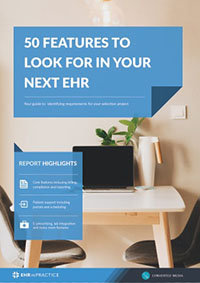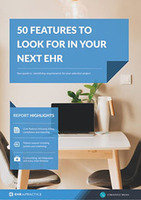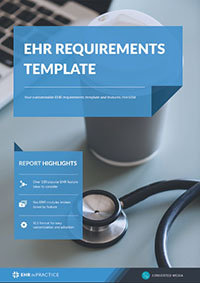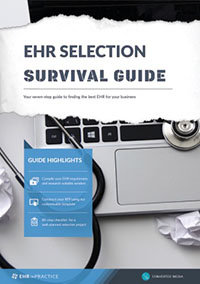Seven key features to look for in an EHR billing module
When analyzing the billing module of your existing EHR system or a system that you are looking to purchase, there are several key features that you should look for. These features will help to streamline your billing and claims processing, resulting in faster payment and increased revenue.
1. Electronic submission
It should go without saying, but EHR billing modules should be able to submit all billing processes electronically. The billing module should be able to submit claims to various health insurance payer sources. Additionally, for patients who use cash payment, the system should be able to electronically generate an itemized bill for services rendered.
Find the features you want in your next software purchase with this guide to 40 key EHR features
2. Report management
The billing module should have the ability to run a report of billing submissions and payments. This report should have the ability to analyze payments based on insurance carriers, individualized patients, and individual providers. Additionally, the report should be able to monitor payments billed and received based on calendar months and analyze for trends. The report management feature may be one of the most useful features in your EHR billing module, providing an opportunity for the practice to analyze trends i and understand what percentage they are being reimbursed.
3. Claims rejection analysis
The billing module should be able to run a report of rejected claims. It should identify reasons for rejection (such as incorrect patient information, incomplete clinical information, wrong insurance information, or non-covered services). This information is vital. The practice can then correct for errors and resubmit for payment.
4. Copayment built into scheduling
Many insurance carriers are required to pay a copayment at the time of treatment. When a patient pays their copayment at the visit, the practice is much more likely to receive this portion of reimbursement, as compared to when it is billed out. Therefore, if the receptionist is alerted to collect a copayment, then this revenue will be less likely to be missed.
5. Automated billing code transcription
Many billing errors are a result of human errors like transcribing diagnosis and billing codes from the visit encounter. If the diagnosis codes, demographic information and billing codes are automatically carried over into the billing documentation, then the risk of human error is greatly reduced.
6. Electronic eligibility verification
Practices spend a huge amount of time and personnel resources to verifying eligibility of services. If your billing module offers a way to streamline this process, with online eligibility verification, the practice may find a great savings to costs of payroll and increased revenue by prequalifying patients before services are rendered.
7. Electronic payment tracking
The system should offer a means of monitoring the status of payment. Good EHR billing modules will show when a bill has been submitted, then show when it has been accepted, when it is being processed and when payment has been sent. This helps the practice by giving an estimation of when services will be reimbursed and helps to manage financial resources.
Free white paper

50 features to look for in your next EHR
A comprehensive guide to EHR features and how they can benefit your practice

Featured white papers
Related articles
-

EHR requirements and key features: your complete guide
Our extended guide to EHR requirements - everything you need to know and more on the subject
-

5 key stakeholders in your EHR selection
Learn about the individuals that, when consulted early and often, can make your EHR selection pro...
-

5 important areas of EHR training during implementation
Successful EHR implementation is not possible without crucial EHR training




